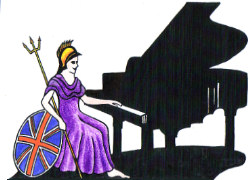Teachers, Accompanists and Piano Entertainers in the UK

UK Piano Page

Browse Locations England » Lancashire » Lytham St Annes
43-45 Bonchurch Road
Brighton, East Sussex BN2 3PJ
England
Largest Selection of Upright and Grand Pianos on
134 Islingword Road
Brighton, East Sussex BN2 9SH
England
Pianola sales and services. Music rolls sales and
Unit 14a, Granary Business Centre
Broad Farm, North Street
Hailsham, West Sussex BN27 4DU
England
Located in the Sussex countryside, we are a family
Orchards Farm
Iden
Rye, East Sussex TN31 7XB
England
Established since 1984, we are situated at the
121-125 Royal Avenue
Belfast, County Antrim BT1 1FF
Northern Ireland
The Belfast music scene has been quietly turning
Music Festival for performers and guests Our 10th
18-06-2022 12:30PM
The Morecambe Bay Piano Group was set up to extend
11-12-2021 01:00PM
The Morecambe Bay Piano Group was set up to extend
08-01-2022 01:00PM
The Morecambe Bay Piano Group was set up to extend
12-02-2022 01:00PM
French Polishing and Pianos
French polishing is a wood finishing technique used on pianos that result in a very high gloss finish, with a deep colour and chatoyancy. French polishing consists of applying many thin coats of shellac dissolved in denatured alcohol using a rubbing pad lubricated with one of a variety of oils.
French polishing became prominent in the 18th century. In the Victorian era. There are some references to shellac in Europe as early as 1590, French polishing was most commonly used on expensive woods such as mahogany or walnut in order to preserve their beauty. Commonly French polished items at the time were impressive pieces of furniture or instruments because they were expected to look good at all times. The Pad is lubricated with oil that then becomes part of the overall finish. the oil helps to stop the pad from sticking and lifting previously applied layers of shellac. , Softer oils such as mineral oil will produce a glossier but less hard finish whereas more viscous oils such as walnut oil and olive oil will produce a more durable finish.
Cleaning French Polish and Pianos
If the item has been French polished, rubbing the surface with a soft, clean cloth is usually ample. You can also polish it now and then with a little wax or even with a tiny bit of furniture cream. Sticky marks should be removed immediately with a cloth soaked in warm, soapy water and then wrung out it needs to be damp, not soaking wet.